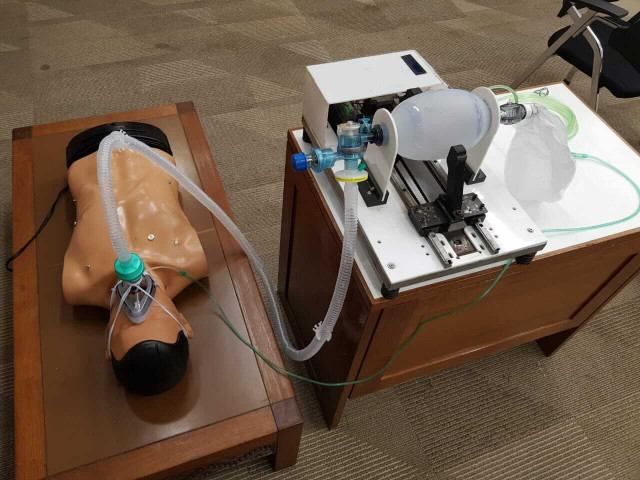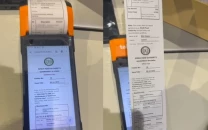Rethinking low cost ventilation systems in healthcare
New device prototype touts potential for saving lives in areas where conventional ventilators are inaccessible

In June of 2020, when Pakistan experienced its highest number of Covid-19 cases, the country of over 220 million was also made to realise the horrifying lack of ventilators in its healthcare system.
Huge, expensive and not yet locally manufactured, importing these life-sustaining apparatuses started to appear more difficult in the pandemic-plagued world than ever before. A call went out across the Pakistani medical community. Something had to be pondered upon and delivered within the country.
Where multiple solutions have been conceptualised since then, many have struggled to consider the device’s cost and portability— factors which greatly influence access in much of Pakistan.
According to The Aga Khan University Hospital (AKUH) Biomedical Engineer Areeba Shakeel Ahmed, she and her team found it more viable to work with an existing mechanism, than to produce something entirely new.
“We saw potential in Artificial Manual Breathing Unit (AMBU) Bags. They are low-cost and readily available in the Pakistani market. However, unlike mechanical ventilators, they rely on hand-compressed ventilation. So prolonged AMBU bag usage can be tiresome with high inter-provider variability and fatigue. We needed to fix that,” said the engineer.
After a month of ideation and testing, Shakeel along with her project member Muhammad Akbar Baig, was able to produce a device they called ResQvent— a long-lasting attachment, which fits onto a standard AMBU bag and automates compression and air-supply.
Claimed to be reliable and cost-effective, the engineers believe their apparatus can potentially act as a temporary ventilator replacement in low-resource settings, thereby saving lives lost due to lack of resources and manpower.
Speaking further about the ResQvent, Shakeel said that its prototype, which costs less than Rs30,000 to manufacture, has been produced under AKUH’s Critical Creative Innovative Thinking (CCIT) Forum. “It weighs around three kilograms, utilises a standard voltage of 220-240 volts and is compact enough to be carried easily, making it ideal for functioning in small spaces and transport situations.”
The device can reportedly provide properly timed breathes to both, conscious and unconscious patients with less than 10 per cent margin of error. Considering which, engineers behind the project believe that if the apparatus is further refined, it can offer an excellent potential for utilisation in low-resource hospitals like clinics as well as austere pre-hospital environments. “If we train first responders in its usage, it can be fitted into ambulances and be carried to far-flung areas where the healthcare gap is the widest. Situations like such are where I believe ResQvent can really make a difference,” expressed Shakeel.
On the other hand however, medical professionals although see scope for the project, they also believe that certain factors need to be proved before any device can be seen as a viable solution.
“There is definitely a growing need for cheaper ventilation alternatives in our healthcare system, but even if cheap we need to be concrete on factors like reliability, battery back-up, mechanical sturdiness and electrical safety of the device before its ready to assist the healthcare system,” a senior anesthetist and intensivist told The Express Tribune.



















COMMENTS
Comments are moderated and generally will be posted if they are on-topic and not abusive.
For more information, please see our Comments FAQ